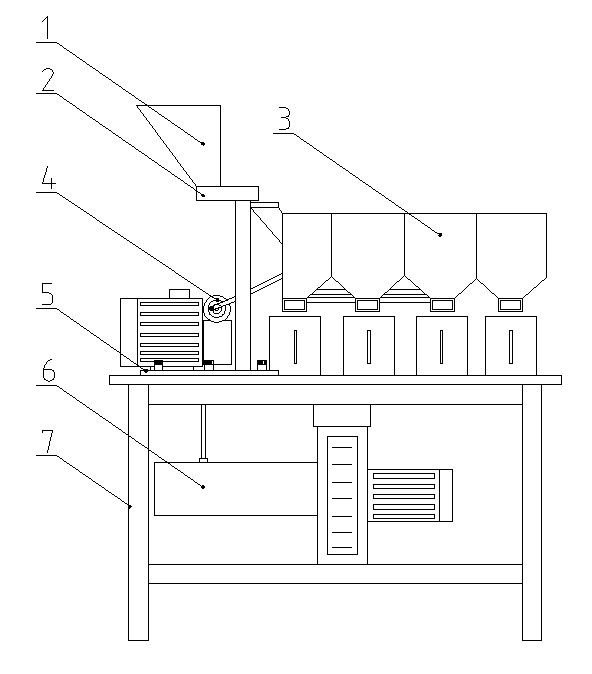In the middle and late stages of cotton growth, flower and bell fertilizer should be accurately applied according to the changes in peach and leaf color. Generally, the force is good, the seedlings have many fertilizers, the flowering period grows prosperous, the leaves are large, the leaves are dark, the internodes are thin, the pods are not tight, the peaches are not tight, and the leaves are not faded at the time of flowering. Such cotton field bells Fertilizer can not be applied early, should be pushed to increase the number of peaches, and when the color of the leaves fades, apply it again. On the contrary, poor soil fertility, less seedlings, less buds, weak flowering periods, small leaves, pale leaves, short and thin internodes, pale leaf color, less flower buds, and pale yellowish color at the early flowering stage, can be applied at a rate of acre per acre. 5 to 8 kilograms of urea fertilizing fertilizer, to flower and boll again in time to apply flower bell fertilizer.
The use of flower bell fertilizer varies depending on the species. Concentration of bolls, early maturing varieties, buds should be applied early, so that the peak fertilizer effect is consistent with the peak of flowering and peach. In addition, if the weather is dry early and the air temperature is high, the evaporation of soil moisture is large, and normal cotton and leaf color should be applied in advance. For poor soil quality and weak growth, the plots with less fertilization in the early stage can not wait until the flowering period. To see peach and leaf color, fertilization should be advanced to the early blooming stage. For late-onset cotton, as long as the growth is good and the peach is too small, it can not be applied early, and the amount can not be used to ensure a long and steady peach. Good soil fertility, prosperous early growth, flower and bell fertilizer can be postponed until after the peach leaf color fade and fertilization.
The amount of flower bell fertilizer depends on the color of peach and leaves. In general, there are many peaches and leaves, and the leaves color retreats quickly. The amount of fertilizer should be used earlier; the amount of peaches should be reduced, and the color of leaves should be reduced slowly. The amount of fertilizer should be used later, so it is better to use long-term urea. Mushi 10~ 15 kg.
The flowering and bolling period is during the high temperature season. Deep flower and bell-fertilizers can increase fertilizer efficiency. Generally, it takes 10 to 12 centimeters deep and 15 centimeters to leave the cotton plant. The plot has been used, if the late growth trend is found, 1 kg of urea can be added per mu and 150 to 200 g of potassium dihydrogen phosphate can be used to spray 80 to 100 kg of water to increase the boll weight and promote premature maturation. Improve quality and yield.
The 5XZ-L laboratory Gravity Separator is used for separating seeds by specific gravity difference. It effectively separates granule with heavy specific gravity ( as gravel, soil particles), and granule with light specific gravity (as mildewed seeds, seeds damaged by worms).
Working principle:
The lab gravity separator sieve bed is triangular shape. On the sieve bed, there are more aluminum punching holes under the hopper area. This design will help raw material stratification.
By the effect of the sieve bed vibration and air blowing from bottom, the raw material is well separated to different ranks. The material discharge outlets are at one side. Outlets are for light impurity, mixing material, good seeds. There are flexible plates on outlets end. These plates can be adjusted to divide area then getting desired sorting effect.
Feature:
Laboratory Gravity Separator's sorting base on grain
density difference. The gravity separator table is triangular structure. The gravity separator table vertical angle, horizontal angle, vibration frequency,
bottom air blower volume are all adjustable. This can meet different dimension
/density seed sorting requirements. By
using the gravity separator, you will seeds density distribution of this batch
of seeds. It is an important seeds studying equipment.
Laboratory gravity separator construction:

1. Feeding hopper
2. Electromagnetism vibration feeder
3. Gravity separator table
4. Driving rotation system
5. Control cabinet
6. Bottom fan
7. Machine frame
Name
Laboratory
seed gravity separator
Model
5XZ-L
Capacity
50 kg/h
Air
blower power
0.37 kw
Vibrating
power
0.13 kw
Vibration
frequency
0-600
times/min
Table
board inclination
0-3°
Dimension
1000×700×1440
mm

Lab Gravity Separator,Laboratory Wheat Mini Destoner,Small Capacity Destoner Machine,Laboratory Gravity Separator
SHIJIAZHUANG SYNMEC INTERNATIONAL TRADING LIMITED , https://www.seedgraincleaner.com